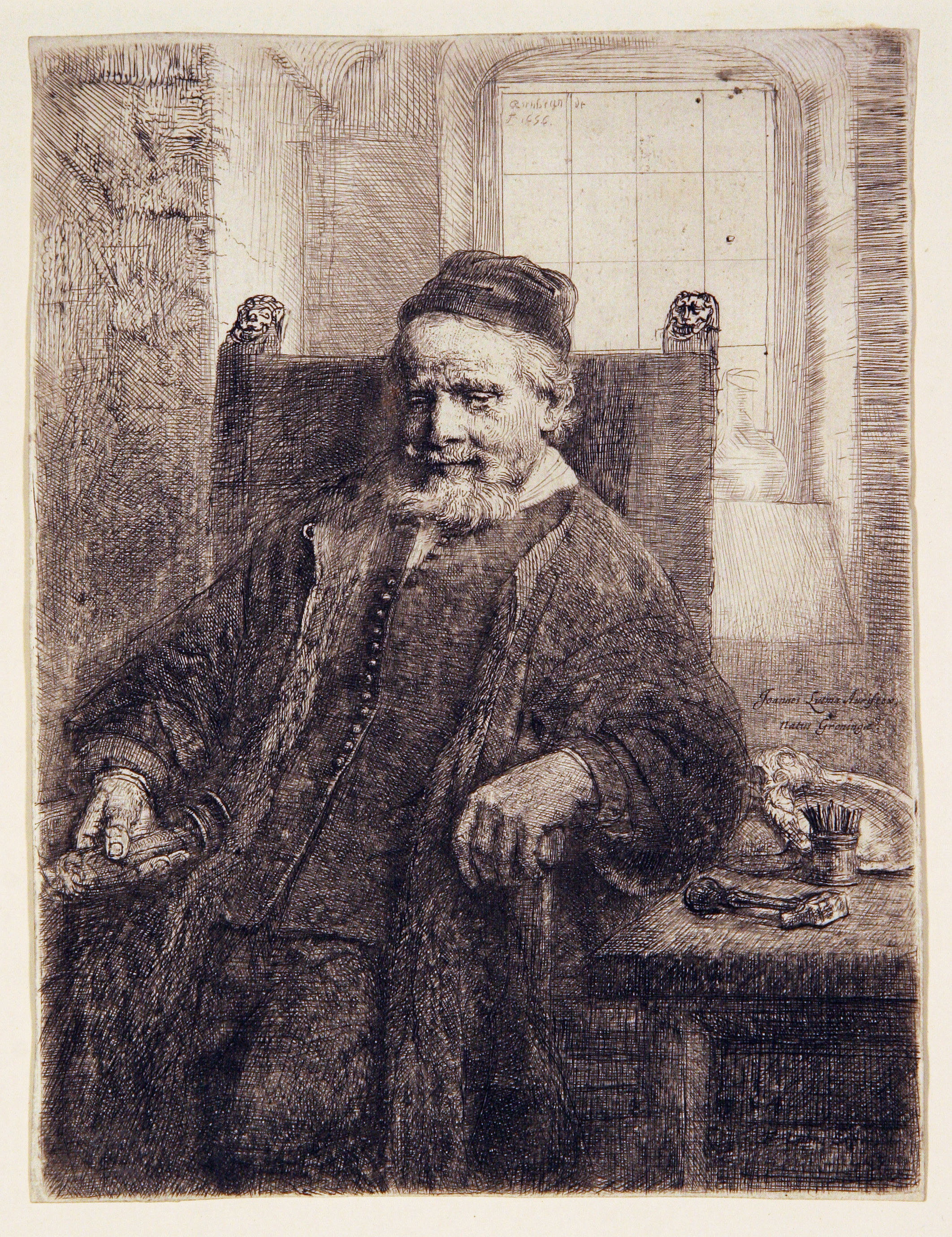Social World of the Artist : Johannas Lutma: Goldsmith
This etching is a piece by Rembrandt Harmenszoon van Rijn from 1656. The man depicted in the portrait is Johannes Lutma the Elder. Lutma was not only a close friend of Rembrandt’s, but also an artist himself. Lutma was a Dutch silversmith and goldsmith in the 17th century. He was well known in Amsterdam for his craft, and best known for his choir-panel located in the New Church of Amsterdam. When depicting Lutma in his portrait, Rembrandt added a few elements that are not usually present in his portraits of other people. On the side table to Lutma’s right, there is a combination of tools typical of a silversmith. There is a small hammer and also a couple of nail punches that help shape the metal. Also, Rembrandt adds a small statue-like figurine in Lutma’s right hand; possibly referencing a piece he was working on at the time. Rembrandt makes it clear to the viewer that Lutma was, in fact, an artist himself, and with the tools Rembrandt is able to show us his craft. Additionally, through his dress and demeanor Rembrandt reveals Lutma’s success as a silversmith. Lutma is dressed in traditional middle class clothing for the Dutch during the 17th century, suggesting his financial stability. Furthermore, he has a calm and relaxed presence in the portraying demonstrating the comfort he enjoys in his life. Overall, Rembrandt respectfully portrays Lutma as a gentle and respectable fellow artist.

